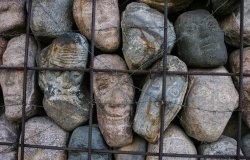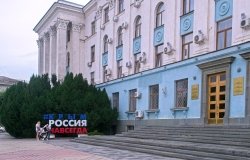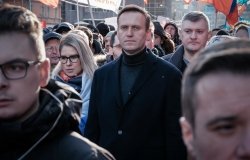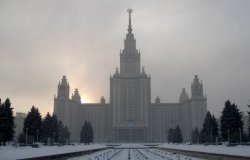Book Discussion: <i>Stage Fright: Politics and the Performing Arts in Late Imperial Russia</i>
“Were the performing arts in imperial Russia an outlet for opposition politics or ideas? The historiography of the era predicts the answer is yes, but the reality is actually the opposite,” said Paul du Quenoy, Associate Professor, Department of History and Archeology, American University of Beirut, at a 14 May 2012 Kennan Institute lecture. Presenting the research behind his book, Stage Fright: Politics and the Performing Arts in Late Imperial Russia, du Quenoy contended that theatrical artists and artistic institutions of the era avoided politics, or were at least resistant to staging productions critical of the state.
Overview
“Were the performing arts in imperial Russia an outlet for opposition politics or ideas? The historiography of the era predicts the answer is yes, but the reality is actually the opposite,” said Paul du Quenoy, Associate Professor, Department of History and Archeology, American University of Beirut, at a 14 May 2012 Kennan Institute lecture. Presenting the research behind his book, Stage Fright: Politics and the Performing Arts in Late Imperial Russia, du Quenoy contended that theatrical artists and artistic institutions of the era avoided politics, or were at least resistant to staging productions critical of the state. Du Quenoy based his conclusions on an archival study of theaters, artists, audiences, and press of the era.
Theaters in Russia during the late imperial era were divided between Imperial and private companies. A review of theater archives, individual memoirs, and theater press reveals an artistic culture around 1900 not very dissimilar to what was emerging in the United States at the time in terms of publicity, stars, and fan base. While conventional wisdom would assume the prevalence of widespread tsarist censorship, du Quenoy said, the reality is that only about 10 percent of plays were subject to censorship, a rate comparable with Europe and the United States at the time. “In fact,” du Quenoy added, “there were some plays staged in Russia that were banned in the United States.” Additionally, enforcement mechanisms were almost absent, which was certainly not the case in other countries at the time.
Artists of the era were likewise divided between those employed by the state and those who performed in private theaters. Those artists who received state support were loyal to the regime that supported them, and did not associate with radicals or even moderates. Artists who performed in private theaters, according to du Quenoy, also held strong anti-radical beliefs. They were paid a great deal less for their performances than state artists, and every time they lost work because of a demonstration, their antipathy toward radicals grew. One anecdote from du Quenoy’s book recounts how a group of anti-government protesters approaching a private theater for support were attacked by actors wielding hammers and slide rules. Political radicals returned the sentiment toward the private actors, calling them the “Cossacks of the stage.”
According to du Quenoy’s research, theatrical audiences of the day sought entertainment and an escape from the ordinary. So-called “idea plays” of the era, which were later lionized in the Soviet era as influential, were not popular at the time. “Audiences wanted melodrama and Sherlock Holmes plays. They liked the classics that evoked themes of love and sacrifice,” said du Quenoy. Of the top ten operas performed at St. Petersburg’s Mariinsky Theater in the era, for example, eight have recently appeared in the repertoire of the Metropolitan Opera of New York. Theatrical critics were no more supportive of politicized productions than performers or audiences were.
After the revolutions of 1917, many artists emigrated, especially those in music and dance. Most traveled to Britain or the United States, according to du Quenoy, and pursued commercialized art in their adopted homes far removed from government interference. Arts education in a number of nations benefited from Russian émigrés, further increasing Russian cultural influences on performing arts around the world.
Twenty years after the fall of the Soviet Union, Russian performing arts are freer but as commercial, concluded du Quenoy. Companies must now support their operations by touring and catering to tourists. If the harsh political controls of the Soviet era are a thing of the past, what about the future of art in politics in today’s Russia? Du Quenoy does not see a renewed clamoring for political content. More typical is the sentiment from a current singer friend of du Quenoy’s: “I don’t give a (expletive) about politics.”
By F. Joseph Dresen
Blair Ruble, Director, Kennan Institute
The Kennan Institute speaker series is made possible through the generous support of the Title VIII Program of the U.S. Department of State.
Speaker
Paul du Quenoy
Associate Professor of History, American University of Beirut
Hosted By

Kennan Institute
The Kennan Institute is the premier US center for advanced research on Russia and Eurasia and the oldest and largest regional program at the Woodrow Wilson International Center for Scholars. The Kennan Institute is committed to improving American understanding of Russia, Ukraine, Central Asia, the Caucasus, and the surrounding region though research and exchange. Read more
Thank you for your interest in this event. Please send any feedback or questions to our Events staff.










